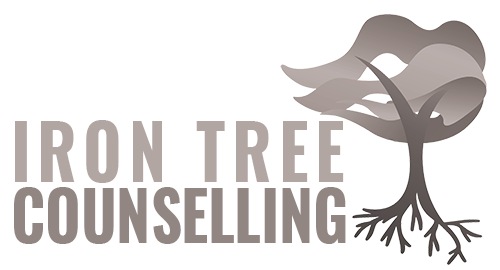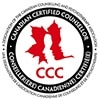Silence Your Inner Critic and Release Your Toxic Shame

Feeling overwhelmed by the constant criticism and judgment of your inner critic? It’s time to find peace.
Before we can release ourselves from the grasp of toxic shame we need to be able to silence our inner critic as this is what is whispering to our toxic shame and making it grow.
Many people have an inner critic and some level of toxic shame. Not everyone, but believe me, it is more common than you think. If you answer yes to any of the following questions, you may be living with an inner critic (aka. a self-critic) which is causing you to feel toxic shame.
- Do you engage in negative self-talk? For instance, saying “I am not good enough” or “I should be better at …”
- Do you feel doubtful of your abilities to complete or engage in things?
- Do you feel embarrassed or ashamed about something you have done or haven’t done?
- Do you compare yourself to others and typically feel inferior or less-than?
- Do you find it hard to accept positive feedback and compliments?
.
WHAT IS AN INNER CRITIC?
An inner critic, aka self-critic, can be described as a voice, way of thinking, perspective of ourselves, and/or a part of ourselves that treats us negatively, critically, and often quite harshly.
- It appears as a thought or ‘voice’ in our own head about ourselves
- It negatively judges what we are thinking, doing, saying, or feeling
- It makes us feel ashamed, embarrassed, anxious, hopeless and defeated
- It generally has the intention of protecting us or could not have any implicit healthy intention
- It generally contributes to unhelpful chronic feelings of shame, guilt, hopelessness and can lead to depression if unresolved
- It can be recognized when we say we “should” do or not do something
- It typically precedes feelings of shame (see this blog to determine the aftermath effects of an inner critic)
Having an inner critic is very common. When it is manageable, sometimes people can find the perspective/comments from the inner critic as “motivating.”
However, the inner critic contributes to feelings of toxic shame, which is a chronic, unhealthy form of shame (learn more about healthy shame vs. unhealthy/toxic shame here).
Thus, it is best to start to try and motivate yourself with other ways (check out this article to learn healthier ways of motivating yourself).
An inner critic typically develops early on in our lives, through our relationships with significant others (caregivers, parents, family members, peers, teachers, etc.), but can also develop and/or worsen in adulthood.
*Uncertain what the difference is between guilt and shame? Click here to find out.
WHY DO WE HAVE AN INNER CRITIC?
Having an inner critic is not an innately human experience – it is not a given in our lives. It is something that develops over time depending on our context and upbringing.
An inner critic typically develops in the following contexts. The more of these contexts you personally experienced the higher likelihood you have an inner critic and the harsher it may be:
Early Childhood Experiences:
- Parenting Style: Children who grow up with overly critical or perfectionistic parents may internalize these attitudes, developing a harsh inner critic.
- Validation and Praise: Lack of positive reinforcement and validation during formative years can lead to low self-esteem and an internalized critical voice.
Trauma and Adversity:
- Abuse or Neglect: Experiences of emotional, physical, or sexual abuse can contribute to the development of an inner critic, as individuals may internalize negative messages about themselves.
- Bullying: Being subjected to bullying or harsh criticism from peers can instill a critical voice.
Cultural and Societal Influences:
- Cultural Expectations: Societal norms and expectations can influence self-perception. Cultures that emphasize high achievement and perfection can foster an inner critic.
- Media and Social Comparison: Exposure to idealized images and standards in social media can lead to unhealthy comparisons and potentially self-criticism.
Educational and Work Environments:
- Academic Pressure: High expectations and pressure to excel academically can contribute to a perfectionistic inner critic.
- Workplace Dynamics: Environments with high stress, frequent criticism, or a lack of support can exacerbate self-doubt and an inner critic.
Personal Relationships:
- Romantic Relationships: Experiences of criticism or devaluation in romantic relationships can contribute to an internalized critical voice.
- Friendships and Social Interactions: Negative experiences or toxic friendships can influence self-perception and foster an inner critic.
If any of the above situations have occurred to you in your life, then you likely have an inner critic. In order to silence your inner critic and support yourself to release the shame that you get stuck in, the first step is to recognize when your inner critic is present.
I encourage you to read this article as well to learn more about recognizing shame since the inner critic and shame often go hand-in-hand.
3 STEPS TO SILENCE YOUR INNER CRITIC
The first step with changing any problematic experience is to recognize when it is happening.
So, try out some of the steps below to begin bringing your inner critic closer to the forefront of your mind so you can see it when it is present and thereby can begin to distance from it and silence it.
Step 1: For one week, choose one aspect of the inner critic experience that you will consciously look out for:
Examples:
- When you say/think “should”
- When you feel ashamed, embarrassed, or guilty
- When you start to feel doubtful or anxious about something that you logically know is good for you
- When you struggle to make a decision
Step 2: Pick at least one time a day you will check-in on your inner critic. Make it the same time/situation every day (i.e., after you brush your teeth).
During this time ask yourself if you have noticed or remember a time during the last 24 hours that you experienced the inner critic. Reflect on what the situation was (what triggered the inner critic), what you felt in your body, and how you noticed the inner critic appear.
Step 3: After you notice the inner critic (Step 1) and after reflecting on your experience of the inner critic (Step 2) choose a grounding strategy to engage in immediately after.
This will help to train your brain to silence and not pay attention to the inner critic.
For example, you could run your hands under cold water for 30 seconds and then take 3 deep belly breaths.
After the first week, see what you learned about the inner critic. Do you have any new insights or ways of recognizing when it appears?
Now either choose the same aspect to notice for the second week or choose something new.
Keep doing this strategy each week to ensure you develop the natural habit of silencing your inner critic and helping you release toxic shame.
CONCLUSION
Silence your inner critic and release your toxic shame.
The steps that you take towards noticing your inner critic will continue to exponentially contribute to your ability to take control of and manage your inner critic and thereby many of your experiences of toxic shame.
Patience is needed on this journey as the inner critic has likely had many years to develop and grow. It often can appear in subtle ways, like when we defer to others’ desires over ours, self-sabotage our goals, and/or procrastinate.
So be patient with yourself and perhaps start to share what you notice with a trusted friend, partner, or family member.
Toxic shame, and thereby the inner critic, gains power through secrecy and staying hidden from others. So, when we can talk about our inner critic and the shame it creates, it loses its power and helps us to overpower it with empathy.
Seeking professional help can give you an edge as well – often helping you to recognize the subtle ways in which the inner critic appears as well as helping you fully process the origin of the inner critic thereby decreasing its power significantly.
Let me know your thoughts about this article. Was there anything new that you learned? Anything you found helpful or interesting? Thanks for reading!
Need Support? If you’re struggling with persistent feelings of guilt, shame, anxiety, depression, or anger, or grappling with relationship issues, don’t hesitate to reach out. You can learn more about my counselling practice to see if a free consultation is something you are interested in.
This blog post is intended for informational purposes only and does not constitute medical advice. If you have concerns about shame, guilt, or your mental health, please consult with a qualified healthcare professional.




